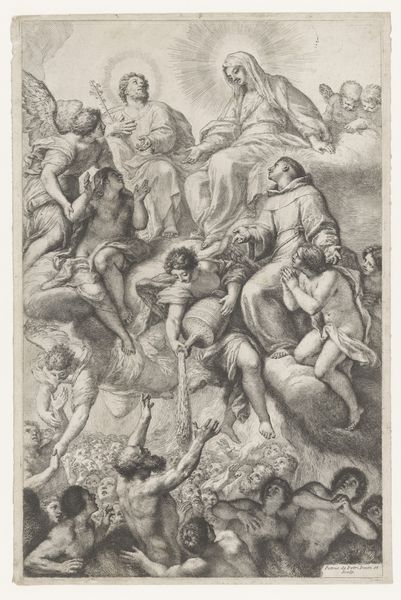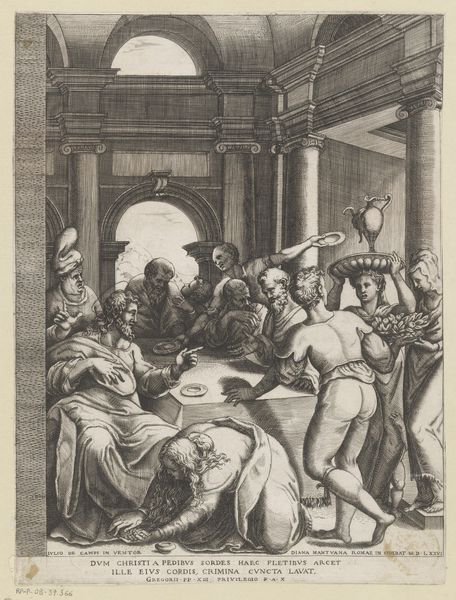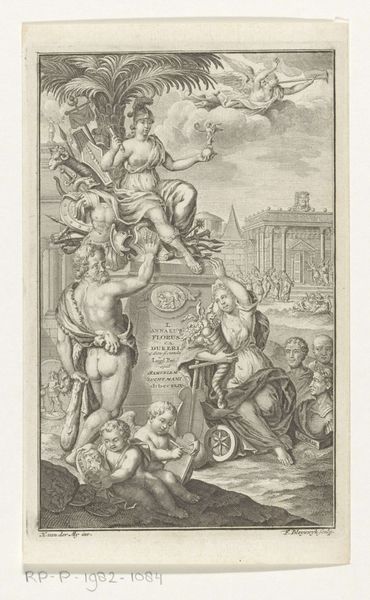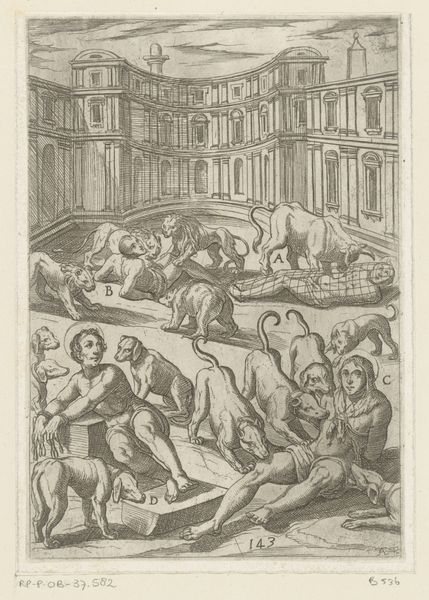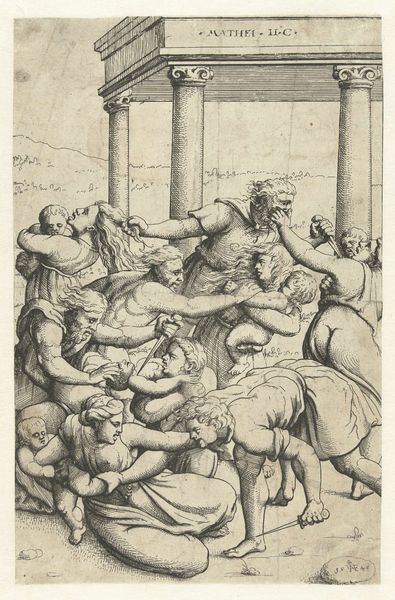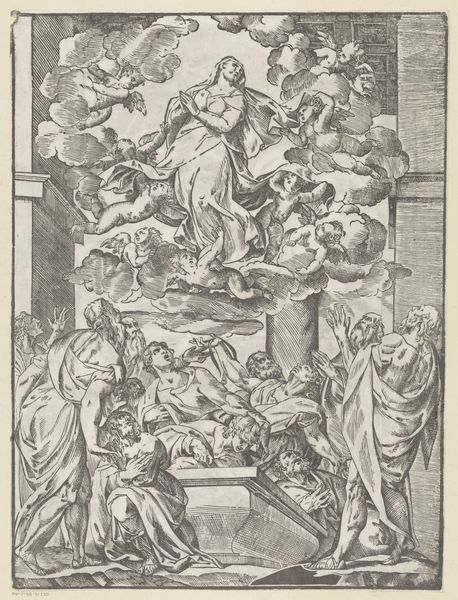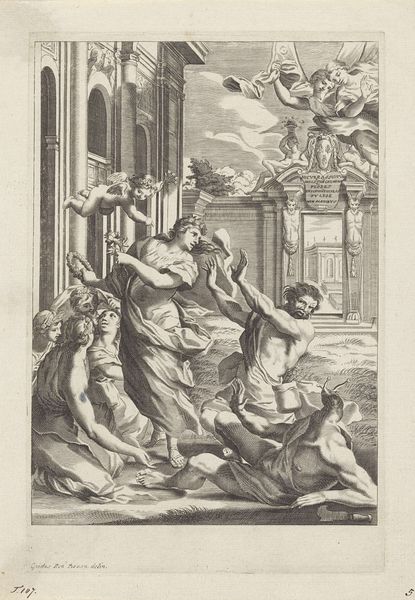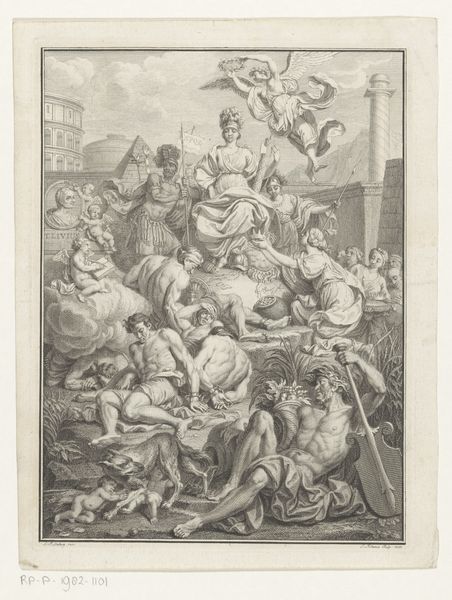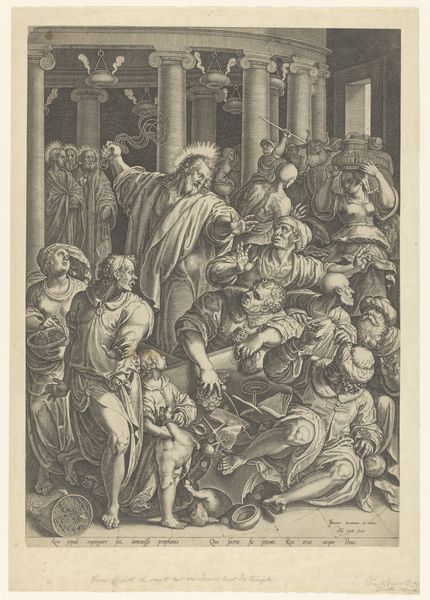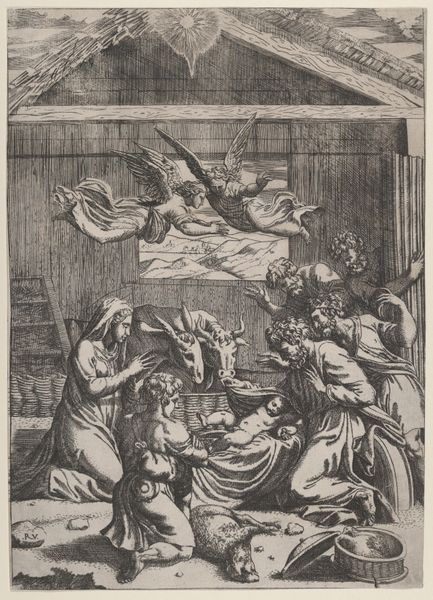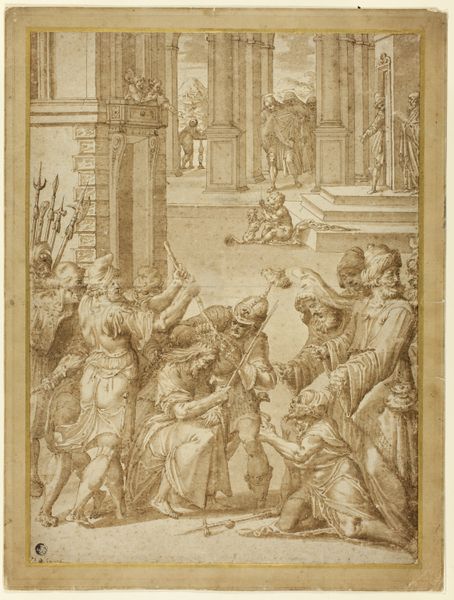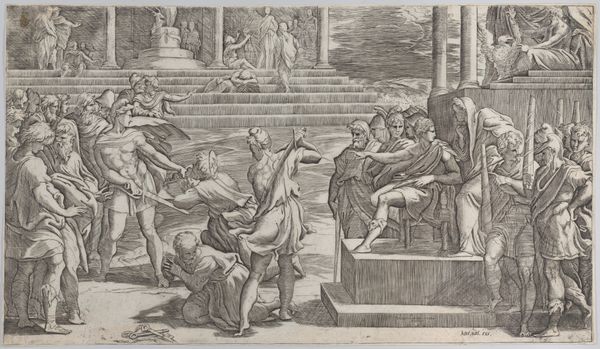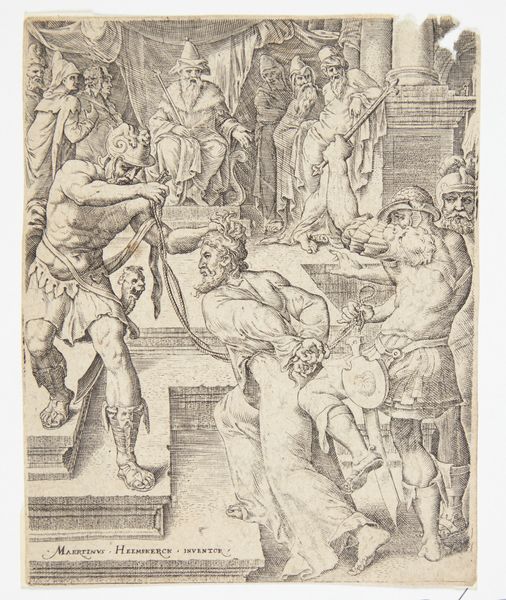
print, engraving
#
narrative-art
#
baroque
# print
#
old engraving style
#
figuration
#
genre-painting
#
history-painting
#
engraving
Dimensions: height 467 mm, width 322 mm
Copyright: Rijks Museum: Open Domain
Editor: Here we have Sébastien Vouillemont’s "Massacre of the Innocents", an engraving from 1641. It's quite striking, all swirling figures and anguished faces rendered in such detail. It's almost overwhelming in its dynamism and emotion. What do you see in this piece from a formalist perspective? Curator: Certainly. Let's consider the composition. The artist employs a densely packed, pyramidal structure. Notice how the figures intertwine, creating a vortex of emotion centered on the impending infanticide. Editor: Yes, I see the pyramid now, leading the eye upwards... But the details keep pulling me back. Curator: Precisely! This tension is key. Now, observe the use of light and shadow. The high contrast accentuates the drama, sculpting the figures and creating a palpable sense of depth within the two-dimensional plane. Consider, for instance, the stark difference in tone between the highlights on the executioner's arm and the shadowed faces of the mothers. How do you think that plays into the work as a whole? Editor: It intensifies the horror, forcing you to look at the contrast between the perpetrator and the victims, almost like a spotlight effect. Curator: An astute observation! This contrast is vital to our reading of the image's meaning as well as it’s structure. Consider also, that the use of line throughout builds its own visual narrative. Note how lines define muscles but also render the anguished expression, and the draping of robes. Editor: So, the formal elements aren't just about aesthetics; they actively contribute to the emotional and thematic impact of the work. Curator: Indeed! The intricate composition, dynamic contrast, and expressive line work coalesce to generate the viewer’s very physical experience of chaos and tragedy. It demonstrates Vouillemont’s understanding of printmaking as a language. Editor: I never considered how much an engraving could convey, analyzing only its forms, but now it is an insight of technique and skill I greatly admire. Curator: Excellent, recognizing the interplay between technique and content grants one a more comprehensive view.
Comments
No comments
Be the first to comment and join the conversation on the ultimate creative platform.
